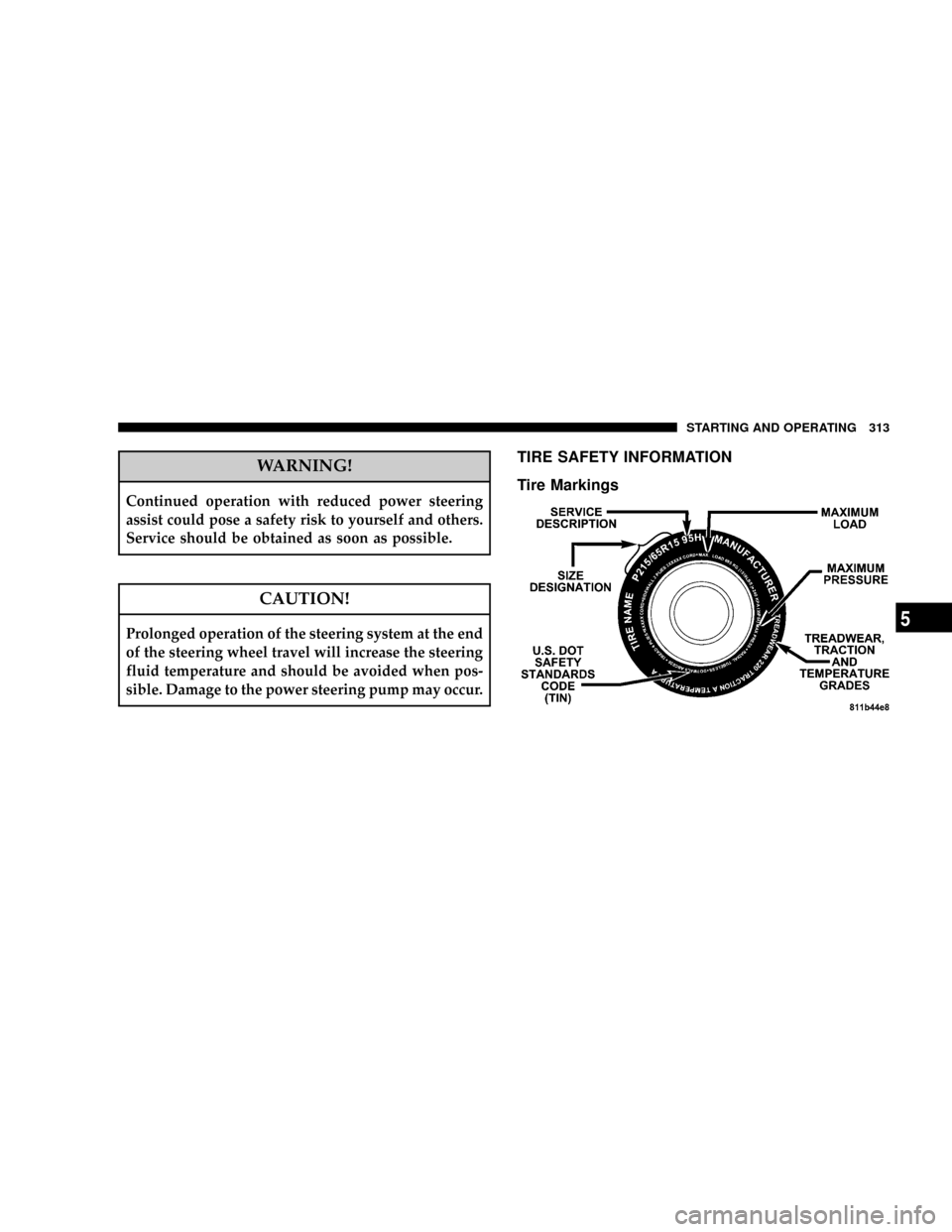power steering DODGE RAM 3500 CHASSIS CAB 2008 3.G Owners Manual
[x] Cancel search | Manufacturer: DODGE, Model Year: 2008, Model line: RAM 3500 CHASSIS CAB, Model: DODGE RAM 3500 CHASSIS CAB 2008 3.GPages: 528, PDF Size: 7.84 MB
Page 78 of 528

mSeats................................114
N40-20-40 Front Seat....................114
NReclining Seats.......................115
NAdjustable Head Restraints..............116
NManual Rotary Lumbar Support Adjustment Ð
If Equipped.........................117
NPower Seats Ð If Equipped..............117
NHeated Seats Ð If Equipped.............119
mTo Open And Close The Hood.............120
mLights...............................122
NInterior Lights.......................122
NBattery Saver........................123
NHeadlamp Delay......................124
NHeadlights, Parking Lights, Panel Lights.....124NDaytime Running Lights
(Canada Only And Fleet Vehicles)..........125
NLights-On Reminder...................125
NFog Lights Ð If Equipped...............125
NMultifunction Control Lever..............126
mWindshield Wipers And Washers............128
NWindshield Wipers....................128
NWindshield Washers...................129
mTilt Steering Column....................130
mDriver Adjustable Pedals Ð If Equipped......131
NAdjustment.........................131
mElectronic Speed Control Ð If Equipped......132
NTo Activate..........................133
NTo Set At A Desired Speed...............133
78 UNDERSTANDING THE FEATURES OF YOUR VEHICLE
Page 131 of 528

DRIVER ADJUSTABLE PEDALS Ð IF EQUIPPED
The power adjustable accelerator and brake pedals allow
the driver to establish a comfortable position relative to
the steering wheel and pedals.
Adjustment
1. Position the driver seat so that you are at least 10
inches (254 mm) away from the airbag located in the
center of the steering wheel.
2. Fasten and adjust the seatbelts.
3. Move the adjustable pedal switch, located to the left of
the steering column near the parking brake release, in the
direction you desire to move the pedals.
4. The pedalscannotbe adjusted when the vehicle is in
R (Reverse) or when the Speed Control is SET.
Adjustable Pedals Switch
UNDERSTANDING THE FEATURES OF YOUR VEHICLE 131
3
Page 185 of 528

Electrical Disturbances
Radio waves may pick up electrical disturbances during
transmission. They mainly affect the wave amplitude,
and thus remain a part of the AM reception. They
interfere very little with the frequency variations that
carry the FM signal.
AM Reception
AM sound is based on wave amplitude, so AM reception
can be disrupted by such things as lightning, power lines
and neon signs.
FM Reception
Because FM transmission is based on frequency varia-
tions, interference that consists of amplitude variations
can be filtered out, leaving the reception relatively clear,
which is the major feature of FM radio.
NOTE:The radio, steering wheel radio controls (if
equipped), and 6 disc CD/DVD changer (if equipped)
will remain active for up to 10 minutes after the ignition
switch has been turned off. Opening a vehicle front door
will cancel this feature.
UNDERSTANDING YOUR INSTRUMENT PANEL 185
4
Page 249 of 528

NStationary Mode......................302
NMobile Mode........................303
NPower Take Off ± Aftermarket Installation....304
mDriving On Slippery Surfaces..............304
mDriving Through Water..................305
NFlowing/Rising Water..................305
NShallow Standing Water.................305
mDriving Off-Road.......................307
mParking Brake.........................308
mBrake System..........................309
NBrake Noise.........................310
NFour-Wheel Anti-Lock Brake System........310
mPower Steering........................312mTire Safety Information...................313
NTire Markings........................313
NTire Identification Number (TIN)..........317
NTire Loading And Tire Pressure...........318
mTires Ð General Information...............322
NTire Pressure.........................322
NTire Inflation Pressures.................323
NRadial-Ply Tires......................328
NLimited Use Spare Ð If Equipped.........329
NTire Spinning........................329
NTread Wear Indicators..................330
NLife Of Tire.........................331
NReplacement Tires.....................331
STARTING AND OPERATING 249
5
Page 312 of 528

ABS Warning Light
The Anti-lock Brake System includes an amber warning
light, located in the instrument cluster. When the light is
illuminated, the Anti-lock Brake System is not function-
ing. The system reverts to standard non-anti-lock brakes.
WARNING!
Pumping of the anti-lock brakes will diminish their
effectiveness and may lead to an accident. Pumping
makes the stopping distance longer. Just press firmly
on your brake pedal when you need to slow down or
stop.
POWER STEERING
The standard power steering system will give you good
vehicle response and increased ease of maneuverability
in tight spaces. The system will provide mechanical
steering capability if power assist is lost.
If for some reason, the power assist is interrupted, it will
still be possible to steer your vehicle. Under these condi-
tions you will observe a substantial increase in steering
effort, especially at very low vehicle speeds and during
parking maneuvers.
NOTE:Increased noise levels at the end of the steering
wheel travel are considered normal and does not indicate
that there is a problem with the power steering system.
Upon initial start-up in cold weather, the power steering
pump may make noise for a short period of time. This is
due to the cold, thick fluid in the steering system. This
noise should be considered normal, and does not in any
way damage the steering system.
312 STARTING AND OPERATING
Page 313 of 528

WARNING!
Continued operation with reduced power steering
assist could pose a safety risk to yourself and others.
Service should be obtained as soon as possible.
CAUTION!
Prolonged operation of the steering system at the end
of the steering wheel travel will increase the steering
fluid temperature and should be avoided when pos-
sible. Damage to the power steering pump may occur.
TIRE SAFETY INFORMATION
Tire Markings
STARTING AND OPERATING 313
5
Page 398 of 528

NCatalytic Converter (Gas Engines).........420
NIntervention Regeneration Strategy ± EVIC
Message Process Flow (Catalyst Full Message)
(Diesel Engines Only)..................422
NEmission-Related Components (Gas Engines) . . 425
NMaintenance Free Battery (Gas Engines).....425
NMaintenance Free Batteries (Diesel Engines) . . . 426
NAir Conditioner Maintenance.............427
NPower Steering Ð Fluid Check............428
NFront Suspension Ball Joints..............429
NSteering Linkage Ð Inspection............429
NFront Prop Shaft Lubrication.............430
NFront Axle Universal Drive Joints And
Ball Joints...........................430NBody Lubrication.....................430
NWindshield Wiper Blades................431
NWindshield Washers...................431
NExhaust System......................432
NCooling System.......................433
NFan ...............................439
NCharge Air Cooler Ð Inter-Cooler
(Diesel Engines)......................439
NHoses And Vacuum/Vapor Harnesses.......440
NFuel System Connections................440
NBrake System........................440
NClutch Hydraulic System................443
NClutch Linkage.......................443
398 MAINTAINING YOUR VEHICLE
Page 428 of 528

WARNING!
²Use only refrigerants and compressor lubricants
approved by the manufacturer for your air condi-
tioning system. Some unapproved refrigerants are
flammable and can explode, injuring you. Other
unapproved refrigerants or lubricants can cause
the system to fail, requiring costly repairs. Refer to
Section 3 of the Warranty Information book for
further warranty information.
²The air conditioning system contains refrigerant
under high pressure. To avoid risk of personal
injury or damage to the system, adding refrigerant
or any repair requiring lines to be disconnected
should be done by an experienced repairman.
Refrigerant Recovery and Recycling
R-134a Air Conditioning Refrigerant is a hydrofluorocar-
bon (HFC) that is endorsed by the Environmental Pro-
tection Agency and is an ozone-saving product. How-
ever, the manufacturer recommends that air conditioning
service be performed by dealers or other service facilities
using recovery and recycling equipment.
Power Steering Ð Fluid Check
Checking the power steering fluid level at a defined
service interval is not required. The fluid should only be
checked if a leak is suspected, abnormal noises are
apparent, and/or the system is not functioning as antici-
pated. Coordinate inspection efforts through a certified
DaimlerChrysler Dealership.9
428 MAINTAINING YOUR VEHICLE
Page 429 of 528

WARNING!
Fluid level should be checked on a level surface and
with the engine off to prevent injury from moving
parts and to insure accurate fluid level reading. Do
not overfill. Use only manufacturers recommended
power steering fluid.
If necessary, add fluid to restore to the proper indicated
level. With a clean cloth, wipe any spilled fluid from all
surfaces. Refer to Fluids, Lubricants, and Genuine Parts
for correct fluid type.
Front Suspension Ball Joints
The ball joints originally supplied with the vehicle are
permanently lubricated at the factory and do not require
service. The ball joints and seals should be inspected
whenever the vehicle is serviced for other reasons.
Steering Linkage Ð Inspection
Whenever the vehicle is hoisted, all steering linkage
joints should be inspected for evidence of damage. If
seals are damaged, parts should be replaced to prevent
leakage or contamination of the grease.
MAINTAINING YOUR VEHICLE 429
7
Page 440 of 528

Hoses And Vacuum/Vapor Harnesses
Inspect surfaces of hoses and nylon tubing for evidence
of heat and mechanical damage. Hard or soft spots,
brittle rubber, cracking, tears, cuts, abrasions, and exces-
sive swelling indicate deterioration of the rubber.
Pay particular attention to those hoses nearest to high
heat sources such as the exhaust manifold. Inspect hose
routing to be sure hoses do not come in contact with any
heat source or moving component which may cause heat
damage or mechanical wear.
Insure nylon tubing in these areas has not melted or
collapsed.
Inspect all hose connections such as clamps and cou-
plings to make sure they are secure and no leaks are
present.
Components should be replaced immediately if there is
any evidence of wear or damage that could cause failure.
Fuel System Connections
Electronic Fuel Injection high pressure fuel systems are
designed with tubes and special connects, connections
and clamps which have unique material characteristics to
provide adequate sealing and resist attack by deterio-
rated gasoline.
You are urged to use only the manufactures-specified
tubes, connections and clamps, or their equivalent in
material and specification, in any fuel system servicing.
Brake System
Power Disc Brakes (Front and Rear)
Disc brakes do not require adjustment; however, several
hard stops during the break-in period are recommended
to seat the linings and wear off any foreign material.
Brake And Power Steering Hoses
When the vehicle is serviced for scheduled maintenance,
inspect surface of hoses and nylon tubing for evidence of
440 MAINTAINING YOUR VEHICLE